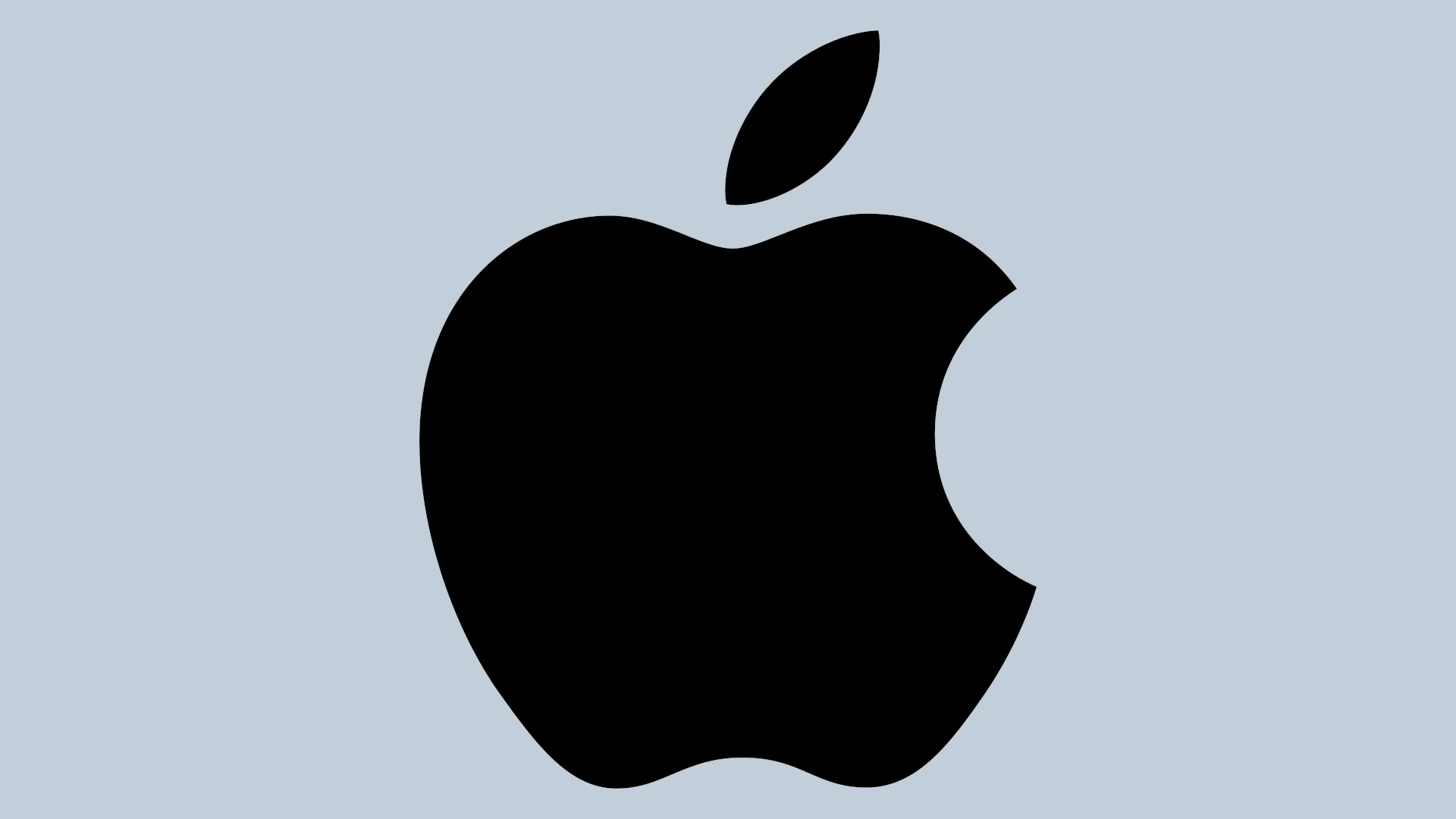Changing your Apple ID can feel risky, especially when you’re worried about losing precious photos, notes, and other data stored on your iPhone or iPad. The good news is that you can change your Apple ID email address without resetting your device or losing any information. You can successfully change your Apple ID while keeping all your data intact by following a few simple steps and making sure to back up your device first.
Many people need to update their Apple ID when switching email providers or when they’ve been sharing an account with someone else and want their own. Apple has designed the process to be straightforward, allowing you to maintain access to your purchases, iCloud data, and settings. The key is to understand which information is tied to your Apple ID and to follow the correct procedure for the change.
How To Change Your Apple ID Without Losing Your Data
Changing your Apple ID doesn’t have to mean losing your contacts, photos, or purchases. Follow these steps carefully to switch Apple IDs while keeping all your data intact.
✅ Step 1: Back Up Your iPhone or iPad
Before making any changes, back up your device to iCloud or a computer via Finder (Mac) or iTunes (Windows). This ensures you can restore everything if needed.
To back up to iCloud:
- Go to Settings
- Tap your name at the top
- Tap iCloud > iCloud Backup
- Tap Back Up Now
✅ Step 2: Sign Out of Your Current Apple ID
- Open Settings
- Tap your name at the top
- Scroll down and tap Sign Out
- Enter your Apple ID password and tap Turn Off
- Choose to keep copies of your data on your device (like Contacts, Safari, and Calendars)
- Tap Sign Out again to confirm
✅ Step 3: Sign In With a New Apple ID
- Open Settings
- Tap Sign in to your iPhone
- Enter the new Apple ID and password
- Follow the on-screen steps to sign in
- Merge the data on your iPhone with the new Apple ID if prompted
✅ Step 4: Re-enable iCloud and Apple Services
Once signed in:
- Tap your name at the top of Settings
- Go to iCloud and turn on services you want (Photos, Contacts, iCloud Drive, etc.)
- Re-download any apps or content not linked to your new Apple ID if needed
✅ Step 5: Update Apple ID in Other Services
Don’t forget to update your Apple ID in the following:
- FaceTime and Messages: Go to Settings > Messages / FaceTime > update Apple ID
- App Store and iTunes: Go to Settings > Media & Purchases > Sign In with new Apple ID
🔐 Note: Purchases from the old Apple ID (like apps, music, or movies) may ask for the old ID’s password when updating. You’ll still have access to them unless you reset the device completely.
By following these steps, you can change your Apple ID without losing important data on your iPhone or iPad.
Key Takeaways
- You can change your Apple ID email address without losing photos, notes, or other data by backing up your device first.
- When signing out of a shared Apple ID, select the “Keep Data” option to preserve information on your device.
- Changing your Apple ID only affects your account credentials, not the content already downloaded or stored on your devices.
Understanding Apple ID
Apple ID serves as the key to accessing Apple’s ecosystem of services. This central account manages your personal information, purchases, and data across all Apple devices.
The Role of Apple ID in User Data
Apple ID connects to your digital life through multiple services. It links to your iCloud storage, which houses photos, notes, contacts, and documents.
When you purchase apps, music, or movies from the App Store, these items are tied to your Apple ID rather than a specific device. This means you can download your purchases on any Apple device by signing in with the same account.
Your Apple ID also syncs data between devices. Change a contact on your iPhone, and it updates on your iPad automatically. This seamless integration is why many users worry about changing their Apple ID.
Important Apple ID connections:
- iCloud storage and backups
- App Store and iTunes purchases
- Device settings and preferences
- Apple services (Apple Music, Apple TV+)
Security Aspects of Apple ID
Apple ID includes several security features to protect your data. Two-Factor Authentication adds an extra layer of protection by requiring both your password and a verification code sent to your trusted devices.
Your primary email address serves as your Apple ID username. This email receives important account notifications and recovery information. Apple allows you to change this address without losing access to your purchases or data.
Apple ID security best practices:
- Use a strong, unique password
- Enable Two-Factor Authentication
- Keep recovery information updated
- Review connected devices regularly
Apple encrypts data transmitted between your devices and their servers. This protection ensures that sensitive information remains secure, even when changing account details.
Preparation Before Changing Your Apple ID
Changing your Apple ID requires careful planning to ensure you don’t lose access to your purchases, data, and services. Taking the right steps beforehand can make the transition smooth and stress-free.
Backing Up Your iOS Device
Users should create a complete backup before changing their Apple ID to prevent data loss. There are two primary backup methods available.
iCloud Backup is the simplest option. To use it, go to Settings > [your name] > iCloud > iCloud Backup and tap “Back Up Now.” Make sure you’re connected to Wi-Fi for the process to complete successfully. This backup will include photos, messages, app data, and device settings.
iTunes Backup (or Finder backup on newer Macs) provides a local alternative. Connect the device to a computer, open iTunes or Finder, select the device, and choose “Back Up Now.” Consider selecting “Encrypt backup” for additional security and to include health and password data.
For extra protection, users can utilize third-party backup apps that save data to external storage or cloud services.
Ensuring Accessibility to Verification Methods
Apple’s security system requires verification when changing account details, so preparation is essential.
First, verify that the phone number associated with the Apple ID is current and accessible. Apple may send verification codes via SMS, so having an active phone is crucial. Update this in Settings > [your name] > Name, Phone Numbers, Email.
Second, ensure access to any backup email addresses listed on the account. These serve as alternative verification methods if the primary email becomes inaccessible during the transition.
Finally, check that trusted devices are properly set up in the Apple ID system. These devices can receive verification codes without requiring SMS. Review this list in Settings > [your name] > Password & Security > Trusted Devices.
Steps to Change Your Apple ID Without Losing Data
Changing your Apple ID doesn’t mean starting over from scratch. With the right approach, you can switch to a new Apple ID while keeping your photos, notes, apps, and other important data intact.
Signing Out of Your Old Apple ID
Before making any changes, back up your device to prevent data loss. Go to Settings and tap on your name at the top of the screen. Scroll down and select “Sign Out.” When prompted, choose the option to “Keep a Copy” of your data on the device.
This step is crucial because it ensures your photos, contacts, calendars, and other important information remain on your phone. Write down your current Apple ID details for reference.
For extra security, create an iCloud backup by going to Settings > [your name] > iCloud > iCloud Backup and tapping “Back Up Now.” Wait until the process completes before proceeding.
Creating a New Apple ID
To create a new Apple ID, use a computer or another device. Visit appleid.apple.com and click “Create your Apple ID.” Fill in the required information, including:
- First and last name
- Email address (this will be your new Apple ID)
- Password (make it strong and unique)
- Date of birth
- Security questions
Verify your email address by clicking the link Apple sends to your inbox. Record your new sign-in details in a secure location – this is extremely important.
Some users prefer creating the new ID through Settings > Sign In on their device after signing out of the old one.
Signing In with the New Apple ID
On your device, go to Settings and tap “Sign In to your iPhone/iPad.” Enter your newly created Apple ID and password. When prompted about merging data, select “Merge.”
This combines information stored on your device with any information tied to your new Apple ID. You may need to verify your identity through two-factor authentication if you’ve enabled it.
After signing in, check that your previous data is still available. Your photos, contacts, and other content should remain on the device since you selected “Keep a Copy” when signing out.
Restoring Data to Your Device
Once signed in with your new Apple ID, you might need to restore some data. Go to Settings > [your name] > iCloud and toggle on the services you want to use with your new ID.
For apps and purchases, visit the App Store > your profile icon > Purchased. Your previously purchased apps should be available for download using your new Apple ID.
To restore a full backup (if needed), go to Settings > General > Reset > Erase All Content and Settings. After your device restarts, follow the setup process and select “Restore from iCloud Backup” when prompted.
Important note: Some data like iCloud photos and purchased content may be linked to your old Apple ID. You might need to download and save these items locally before the switch.
Handling Different Devices and Services
Changing your Apple ID requires careful attention to each device and service in your Apple ecosystem. Different devices handle the Apple ID transition in unique ways, and understanding these differences can prevent data loss.
Changing Apple ID on iPhone and iPad
On iPhone and iPad, changing your Apple ID requires a few specific steps. First, go to Settings and tap your name at the top of the screen. Then select “Sign-In & Security” and tap your email address to make changes.
Before making any changes, ensure you’ve backed up your device. Connect to Wi-Fi and go to Settings > your name > iCloud > iCloud Backup > Back Up Now.
For apps purchased with your old Apple ID, you’ll need to sign in with that ID to update them in the future. Make a note of which apps were downloaded with which account.
Turn off “iCloud Photos” temporarily before switching accounts to prevent possible photo syncing issues.
Managing iCloud and Apple Music With New Apple ID
iCloud data requires special attention when changing your Apple ID. Before switching, download important iCloud documents, photos, and contacts to your device or computer as a precaution.
For iCloud photos, make sure “Download and Keep Originals” is selected in Settings > Photos instead of “Optimize Storage” to ensure all photos are on your device.
Apple Music subscription will transfer to your new Apple ID if you:
- Cancel your current subscription
- Wait for it to expire
- Subscribe again with the new Apple ID
Your playlists and library might need to be rebuilt, so consider taking screenshots of important playlists before making the switch.
Adjusting Settings on Mac and iPod Touch
On Mac computers, sign out of all Apple services before changing your ID. Go to System Preferences > Apple ID > Overview > Sign Out. This helps prevent sync conflicts.
Back up important files from your Mac to an external drive or alternative cloud service before making any changes to your Apple ID.
For iPod Touch devices, the process mirrors iPhones but with fewer services to manage. Sign out of the App Store and iTunes separately in Settings before signing in with your new ID.
Remember that purchases made on Mac will remain tied to your old Apple ID. Keep a record of both IDs for future reference when updating apps or accessing purchased content.
Additional Considerations When Changing Apple ID
When changing your Apple ID, several aspects need attention beyond the basic steps. Managing family features, understanding data restrictions, and planning for storage needs can make the transition smoother.
Handling Family Sharing and Subscriptions
Family Sharing connects up to six family members, allowing them to share purchases, subscriptions, and storage plans. When changing an Apple ID, any Family Sharing group you organize will be affected.
If you’re the Family Organizer, changing your Apple ID requires extra steps. First, transfer the organizer role to another family member temporarily. This prevents disruption to shared subscriptions like Apple Music, Apple TV+, and Apple Arcade.
After changing your Apple ID, rejoin the family group and reclaim your organizer status if needed. All shared purchases made with your previous Apple ID will remain accessible to family members.
Check all subscription services linked to your account. Some may need manual updates with the new Apple ID information to prevent service interruptions.
Understanding MDM Restrictions and Data Types
Mobile Device Management (MDM) restrictions may limit Apple ID changes on company or school devices. Check with your IT department before making changes if your iOS device is managed.
Different data types have varying behavior during an Apple ID transition. Photos, contacts, and calendar events typically transfer smoothly when properly backed up to iCloud.
App-specific data may behave differently. Some apps store data locally, while others tie it to your Apple ID. Before changing your ID:
- Back up critical data in third-party apps using their export features
- Take screenshots of important settings and configurations
- Review app-specific login credentials that might be separate from your Apple ID
Purchases like apps, music, and movies remain tied to the original Apple ID. Make a list of purchased content before making changes.
Selecting an Appropriate iCloud Storage Plan
iCloud storage requirements may change when switching Apple IDs. The free 5GB plan might not be sufficient for all your data.
Before changing your ID, check your current storage usage under Settings > [Your Name] > iCloud. Consider upgrading your storage plan if you’re close to the limit. Plans range from 50GB to 2TB, with the latter suitable for heavy users with large photo libraries.
Family Sharing allows storage plan sharing, so coordinate with family members if applicable. Temporary storage upgrades during the transition can provide extra space for comprehensive backups.
After changing your Apple ID, review which data types sync to iCloud. Toggle on essential items like:
- Photos and videos
- Device backups
- Documents and app data
Monitor your storage usage for several days after the change to ensure everything transfers correctly.
Software and Tools to Assist in Data Transfer
Changing your Apple ID doesn’t have to be risky. Several specialized tools can help ensure your data stays safe during the transition process.
EaseUS MobiMover for Data Transfer
EaseUS MobiMover is a comprehensive data transfer tool specifically designed for iOS devices. This software allows users to move data between iPhones, iPads, and computers without relying on Apple ID credentials.
With EaseUS MobiMover, users can:
- Transfer photos, videos, contacts, messages, and other data types
- Back up iPhone/iPad content to a computer before changing Apple ID
- Restore backed-up data after the Apple ID change is complete
- Move files selectively or perform a complete device backup
The software works with various iOS versions and offers a user-friendly interface. It provides a safety net for those concerned about data loss during Apple ID transitions.
Leveraging Third-Party Data Transfer Tools
Beyond EaseUS, several other tools can assist with moving data between Apple IDs. iMazing and AnyTrans offer similar functionality with their own unique features.
These applications help users:
- Create complete device backups independent of iCloud
- Extract specific data like photos or messages from backups
- Transfer data directly between devices without using Apple servers
- Manage app data that might otherwise be lost during account changes
Most third-party tools offer free trials before purchase. This allows users to test compatibility with their devices and ensure the software meets their specific needs before committing.
Obtaining Expert Help Through JustAnswer
For those uncomfortable with DIY solutions, JustAnswer connects users with Apple specialists who provide personalized guidance through the Apple ID change process.
JustAnswer experts can:
- Evaluate your specific situation and recommend the safest approach
- Provide step-by-step instructions tailored to your devices
- Help troubleshoot if problems occur during the transition
- Offer real-time assistance via chat or phone support
The service is particularly valuable for users with complex setups involving multiple devices or large amounts of data. Expert guidance reduces the risk of mistakes that could lead to permanent data loss.
Troubleshooting Common Issues
Even with careful planning, you might encounter challenges when changing your Apple ID. These common issues have straightforward solutions that can help you maintain access to your data.
Resolving Issues with Find My and iCloud
When changing Apple IDs, Find My iPhone can sometimes cause complications. If your device remains linked to your old Apple ID through Find My, you’ll need to disable it first. Go to Settings > [your name] > Find My > Find My iPhone and toggle it off.
For iCloud sync problems, check your internet connection first. If data isn’t transferring properly between devices, sign out of iCloud on all devices, then sign back in with your new Apple ID.
On iPhone 15 models, users might notice faster sync times but may need to wait 24-48 hours for all data to fully transfer to the new account. During this period, keep both old and new Apple IDs active if possible.
Navigating Apple ID Removal Challenges
Removing an Apple ID from a device requires careful steps. If you’re unable to remove the old Apple ID, verify you know the password. Without it, you’ll need to provide proof of purchase to Apple Support.
For shared devices, make sure to back up specific data before switching accounts. This is especially important for:
- Photos and videos
- Notes and documents
- App-specific data
Two-factor authentication might create roadblocks during removal. Have a trusted phone number or recovery key ready. For newer devices, the process may ask for your device passcode as an additional security step.
Overcoming Sign-In Difficulties
Sign-in problems often stem from forgotten passwords or security questions. Use the “Forgot Apple ID or Password” option on the sign-in screen. Apple will send recovery instructions to your trusted device or recovery email.
Authentication failures might occur if you’ve recently changed your password. Try these fixes:
- Update your password in all locations (Settings, App Store, iTunes)
- Sign out completely from iCloud.com and then sign back in
- Restart your device after changing credentials
For persistent issues, check if Apple’s system status shows any outages. Sometimes the problem isn’t on your end. Timing your Apple ID change during non-peak hours can help avoid temporary server congestion problems.
Frequently Asked Questions
Many Apple users have common concerns about changing Apple ID information. Here are answers to some of the most frequently asked questions about making Apple ID changes without losing important data.
Can I update my Apple ID on my iPhone without losing my existing information?
Yes, you can update your Apple ID on an iPhone without losing existing information. First, sign out of the current Apple ID in Settings. Then create or sign in with the new Apple ID.
Before making any changes, it’s important to back up your device through iCloud or iTunes. This provides a safety net for your data during the transition process.
Remember that purchased apps will remain on your device, but you’ll need to sign in with the original Apple ID to update them in the future.
Is it possible to change my Apple ID email address without data loss?
Changing just the email address associated with your Apple ID is possible without losing data. Users can modify their email address through the Apple ID account page or device settings.
This process allows the user to keep all purchases, subscriptions, and data intact. The system treats this as an update to existing credentials rather than creating a new account.
Apple sends verification emails to both the old and new addresses to confirm the change is authorized.
What steps should I follow to switch Apple IDs on my iPad and retain my data?
First, back up all important data using iCloud or iTunes before switching Apple IDs. Then go to Settings, tap on the current Apple ID name, and scroll down to sign out.
During the sign-out process, choose which data to keep on the device when prompted. This typically includes contacts, calendars, and other personal information.
After signing out completely, sign in with the different Apple ID credentials. The iPad will retain locally stored data while accessing new account information.
Will changing my Apple ID on my devices affect my photo library?
Changing your Apple ID can affect access to photos stored in iCloud Photos. Photos synced through iCloud will no longer be accessible after switching to a new Apple ID.
To preserve photos, download them to a computer or export them before changing accounts. Alternatively, enable the option to keep a copy on the device when signing out.
Local photos taken with the device camera and stored only on the device will remain unaffected by Apple ID changes.
How can I replace my Apple ID on my iPhone without affecting my apps and data?
Before replacing an Apple ID, download and save all purchased content. Apps will remain on the device but may require the original Apple ID for updates.
Turn off Find My iPhone and sign out of iCloud, App Store, and iTunes while selecting the option to keep data on the device. This preserves local data during the transition.
After signing in with the new Apple ID, restore backed-up data as needed and re-download any necessary purchases from the new account.
What precautions are necessary to prevent data loss when modifying Apple ID credentials?
Always create a full backup of all devices before modifying any Apple ID information. Use both iCloud and computer-based backups for maximum security.
Document all purchases, subscriptions, and important information associated with the current Apple ID. This helps track what needs to be transferred or re-established.
Consider the timing of changes carefully, avoiding periods when immediate access to data is critical. The transition process might temporarily limit access to some services.







